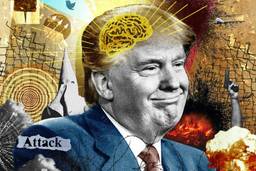The Case Against Using the GDP as a Measure of Economic Health
The GDP has always been a bitterly contested yardstick, explains Ehsan Masood in a new history.
Chris Lehmann

Among the many superstitions doled out by the self-proclaimed scientific authorities of modern economics, perhaps no totem looms quite so large as the Gross Domestic Product. Created during the New Deal, the statistic was meant to aggregate such national economic indicators as consumption and industrial output that had hitherto been compiled in a scattershot fashion, if at all.
But compressing the diverse activities and social forces of a sprawling economy into a single number is inherently a grievous oversimplification, as science writer Ehsan Masood demonstrates in his sprightly and informative new history, The Great Invention: The Story of GDP and the Making and Unmaking of the Modern World. As Masood explains, even the New Deal functionary charged with devising the thing spent the better part of his career doing battle with its official computation.
In 1933, at the prompting of the U.S. Senate, the Commerce Department enlisted a young economist named Simon Kuznets to patiently survey the output of the chief agricultural and industrial sectors of the U.S. economy over the previous three years. As one might expect, Kuznets found the U.S. had lost almost 40 percent of its overall income after the market crash, from $81 billion in 1929 to $49 billion in 1932.
But Kuznets, who had emigrated from Soviet Russia in 1922, resisted counting government expenditures as part of overall national income. He had reasoned, as do many market-besotted neoclassical economists today, that government spending crowds out more productive private investment and serves as a drag.
It fell to British economist John Maynard Keynes, in a 1940 tract called How To Pay for the War, to put forward a basic formula for tallying a nation’s domestic product that included government spending. Eager New Dealers took up Keynes’ revision and shunted the GDP’s actual inventor to the margins of policy debate, where Kuznets would fulminate against his creation’s rude fate for the rest of his life.
These contentious birth pangs marked just the first dust-up over what the GDP should encompass. The measurement was adopted widely as part of the postwar Marshall Plan, with growth in GDP a requirement for continued U.S. aid. To this day, a developing nation’s attractiveness to foreign investment rests mainly on its ability to produce a fast-growing GDP.
But GDP is inherently a political as well as an economic reckoning, as another early defector, Pakistani economist Mahbub ul Haq, famously argued in 1968. Haq explained how Pakistan’s worship of the GDP was badly distorting the real Pakistani economy. Drawing on research done by his wife, Khadija, Haq revealed that a tiny clutch of 20 families had amassed most of the country’s resources: 66 percent of its industrial companies, 79 percent of its insurance funds and 80 percent of its publicly traded banks. The reassuring uptick in GDP by more than 6 percent each year was masking a full-blown social crisis, Haq argued, and if the beneficiaries fail to increase public invest- ment, then:
society has every right, in fact it has the duty to resist the emergence of a privileged class of entrepreneurs which is pampered by fiscal concessions, which is sheltered by prohibitive tariffs, which is nurtured by artificial incentives and which makes its living on the basis of imperfect and inefficient competition.
Haq went on to devise an alternate measure of national economic well-being called the Human Development Index, which, under the aegis of the United Nations’ Development Program, uses the benchmarks of life expectancy, adult literacy and per capita income. But like the crude growth figures of GDP, the HDI suffered from enormous blind spots — chiefly environmental degradation, something neoclassical economics oafishly regards as an uncontrollable “externality.” Like many policy thinkers in the developing world, Haq viewed the effort to rein in carbon emissions as a ploy on the part of developed industrial powers to pull the ladder up after themselves once they had profitably despoiled the planet.
With climate change accelerating, other researchers have sought to further amend GDP by affixing a price to natural resources. In 1997, Louisiana State University economist Robert Costanza and colleagues assessed the dollar value of the natural world at around $33 trillion. This effort has touched off fractious debates on everything from his methodology to his allegedly callous quantification of irreplaceable natural resources and species.
Against this infighting, Masood preaches a sort of patient incrementalism: “GDP is simply too entrenched as a policy tool to be abandoned just because eminent academics dislike it,” he writes. And in 2013, the GDP was quietly revised to accommodate another brand of expenditure: money spent on scientific research. Still, Masood concedes this shift took place only after five decades of internecine squabbling.
It’s clear we can’t wait another five decades to quantify environmental harm. As was the case at the moment of the GDP’s creation, politics continues to play an enormous part in litigating the proper domain and influence of this powerful number — and in all sorts of ways, the moment seems riper than ever to adopt an updated version of Mahbub ul Haq’s anguished call to action.









